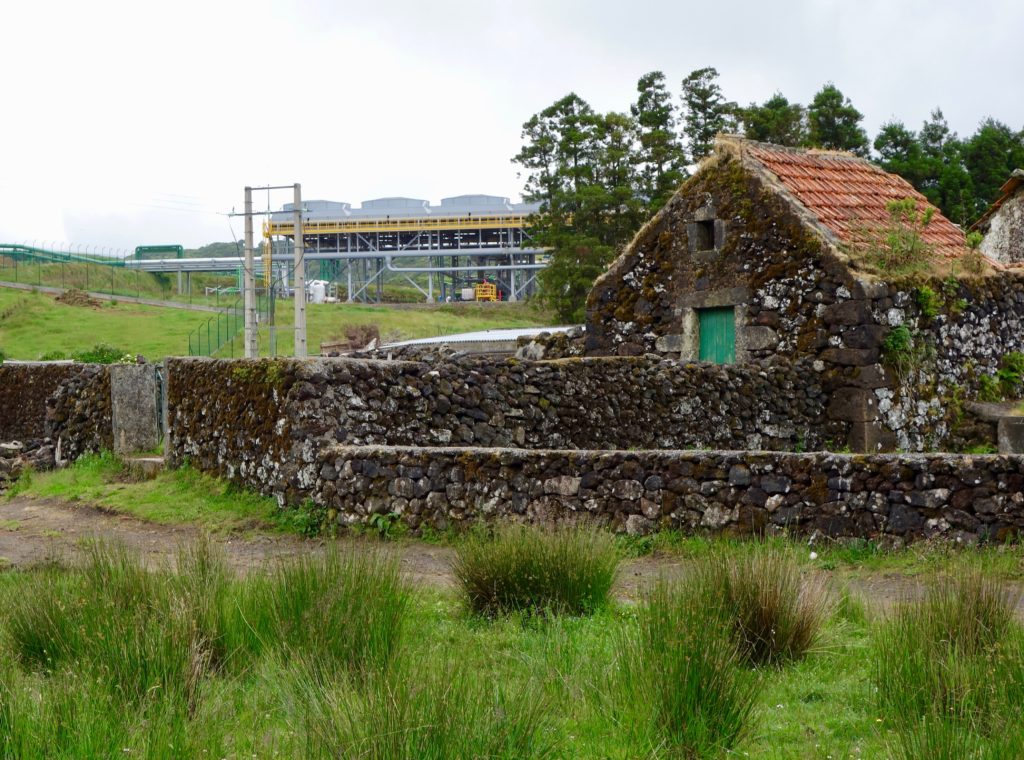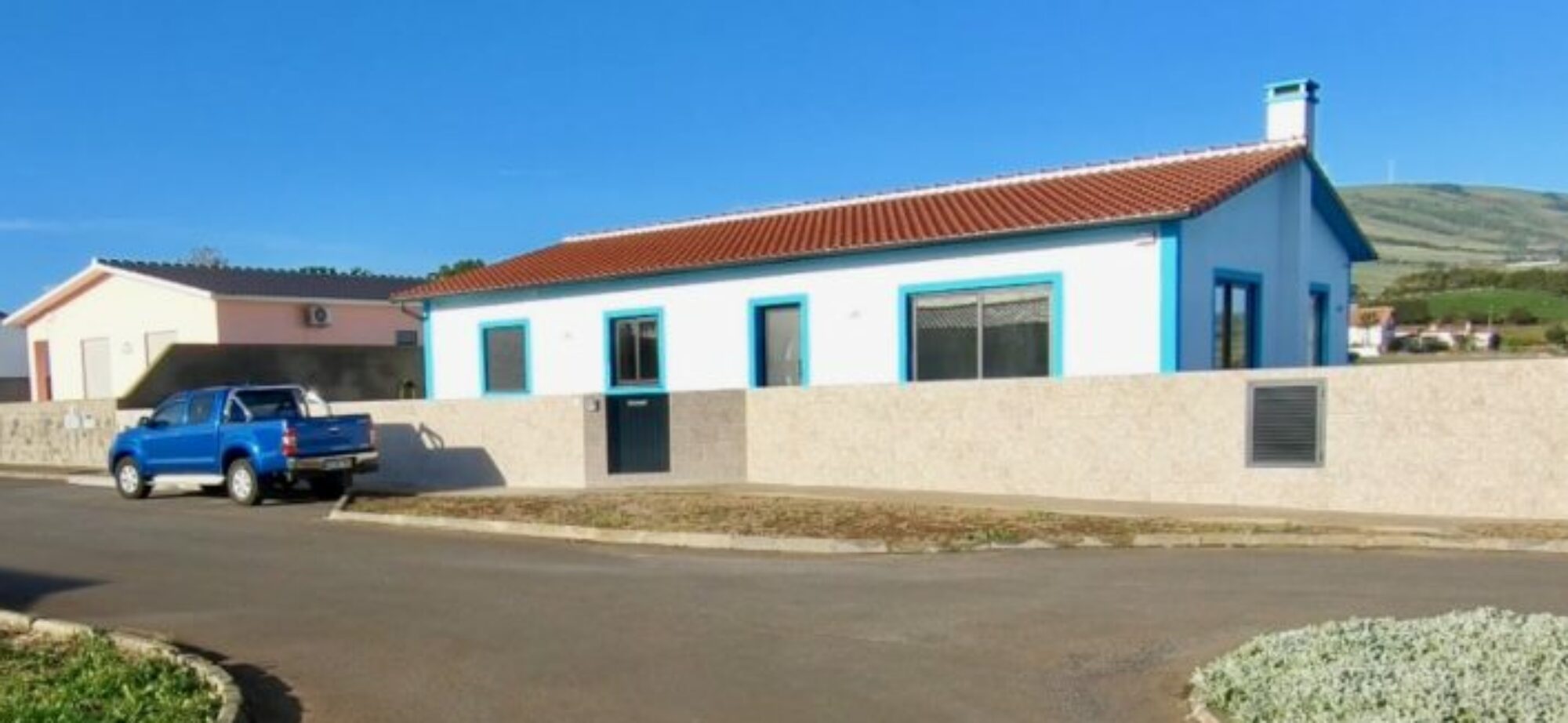
I love the juxtaposition of Terceira, I always have. From antiquated (maybe I should say more restrictive) dating protocols to donkey carts with milk cans in a parking meter zone, the old and the new live side by side and strongly influence each other.
I’m truly amazed when I visit Padre Candido’s grave in the Praia cemetery (Padre Candido performed every ceremony for my wife’s generation in the main church — baptisms, communions, confirmations, and funerals) where many visitors still are shrouded completely in black to visit their loved one’s graves. This year, across the street from the cemetery, is our newest restaurant, a Burger King with signs in English and the tallest, most non-traditional sign towering above the antique cemetery.
Recently we’re trudging through yet another cow pasture as part of another marked hiking trail. We head down a dirt trail and pass one of the hundreds of hand-built, stone barns which have served families and their cows for centuries. Behind one I hear and then see a geothermal electric generation facility – the second largest in the world when it opened in 2017. This system (trying to paraphrase some really tough words) harnesses the steam and pressures in the volcanic island to generate about 10% of the island’s electricity. And 50 feet away, farmers repair rock walls and old wooden gates to keep milk cows in their pasture.
Sometimes I wonder how the generations and technological advances exist. One anthropological measure of a culture explores how change and tradition interact. From my limited understanding of these wonderful people in this European environment, I have to admire how they go to church on Sundays and Holy days, and then drive both donkey carts and GPS-guided tractors to their fields to raise sustenance for their families.
It’s not always a perfect balance, and it’s not always peace and harmony. But it is working, and I’m having a magnificent time exploring and learning about how they maintain traditions and also capitalize on new technology. I’m learning more about my neighbors, my in-laws, and I’m even learning more about myself and America.
So when I get impatient and frustrated with stores are closed for lunch, or when the cows are blocking the road while I’m in a hurry, I force myself to remember that this island is not “backwards,” they are more advanced than I was when living in DC. They have evolved into a more balanced way of coping with life!
